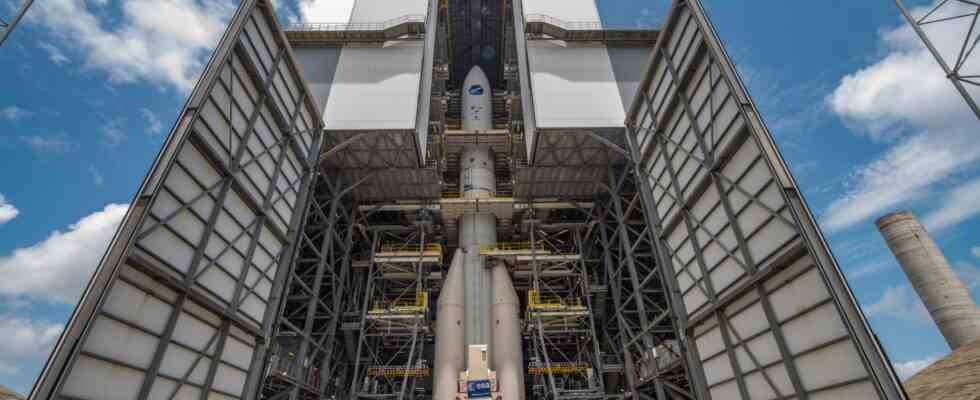Status: 03.02.2023 12:40 p.m
Actually, the new Ariane 6 rocket should have been flying into space for a long time. But the start was delayed due to problems. And there are also difficulties with Vega-C. Is Europe losing its independent access to space?
Originally, Ariane 6 was supposed to be launched while Ariane 5 was still flying. But Europe’s new rocket is three years behind schedule – also due to the corona pandemic. The engineers are still testing the performance of the new model. This includes so-called “overheating tests”: first the engine runs for 45 seconds, the second time it is much longer at more than 900 seconds. Ariane 6 can only take off before the end of the year if there are no surprises.
One problem with this: “We have already sold a large number of launches, even though the rocket has not yet flown,” Jens Laßmann, site manager of the ArianeGroup in Bremen. “And the expectations of the market are high.” This is also due to the fact that Russian Soyuz rockets are no longer used due to the Ukraine war and the sanctions.
40 percent lower costs
The biggest innovation with Ariane 6: The upper stage – the part of the rocket in which the satellites are transported – is equipped with a reignitable engine called Vinci. It can be reignited up to four times, allowing it to place multiple satellites in different orbits. That is, the upper stage delivers the first satellite to site A, drifts on to the next orbit, and delivers another satellite to site B, and so on.
According to Laßmann, this development is necessary because the satellite market has changed completely: “We have to be able to fly more different missions, not only in geostationary orbit, but also in low earth orbit.” This low orbit is the ideal position for weather satellites or earth observation satellites, for example.
As with the previous Ariane 5, the upper stages for the new model will continue to be built in Bremen. With new materials and based on the assembly line work in the automotive or aircraft industry, a lot of construction work is being done by robots. According to Laßmann, this should reduce costs by 40 percent compared to the previous model.
More competition
The Ariane 6 should also be the European answer to the global competition. For a long time now, not only countries like Russia, the USA, China or India have been building rockets. Private companies, such as Elon Musk’s company Space X, are also entering the market. So the competition has increased. There are more suppliers – reducing the prices rocket manufacturers can charge for transporting satellites.
But the first launch date of Ariane 6 is still in the stars. The European space agency ESA says: Certain “milestones” still have to be reached. Further “overheating tests” are currently being carried out on the test bench at the DLR Lampoldshausen site. These are demanding tests with the aim of simulating flight-like conditions: from refueling to re-igniting the engine.
I’ve already passed the high school twice. A third test will follow in the spring. Then there are tests of the main and upper stages at the French space station in Kourou. A more precise start date can only be given once these milestones have been completed.
Problems also with Vega-C
And there are also problems with another European space project: The second flight of the new transport rocket Vega-C in December failed. The reason: a problem with the engine. An independent commission of inquiry is currently looking for the cause. Depending on what comes out of it, this rocket could also fail for a long time.
The Vega-C should actually make European space travel more competitive. Your advantage: In contrast to the smaller predecessor rocket Vega, the Vega-C can transport higher payloads, i.e. heavier satellites, with up to 2.2 tons into orbit – and at the same price as the previous version.
No independent access to space?
But what does that mean for European space travel? Europe has a rocket problem: “We are in a serious crisis in the European launch vehicle sector,” said the European space agency ESA in January. Because the former ESA emergency plan, simply to bridge the bottleneck with Russian Soyuz rockets, no longer works due to mutual sanctions due to the Ukraine war.
In the summer, when the last two Ariane 5 rockets are launched, Europe may be without independent access to space for the time being. In Bremen, Laßmann and his colleagues continue to work under high pressure. They have already built two models of the new Ariane 6 upper stage: One of them for tests in Lampoldshausen, the other is already in Kourou – also for trials. The first model that actually flies will be delivered next.

